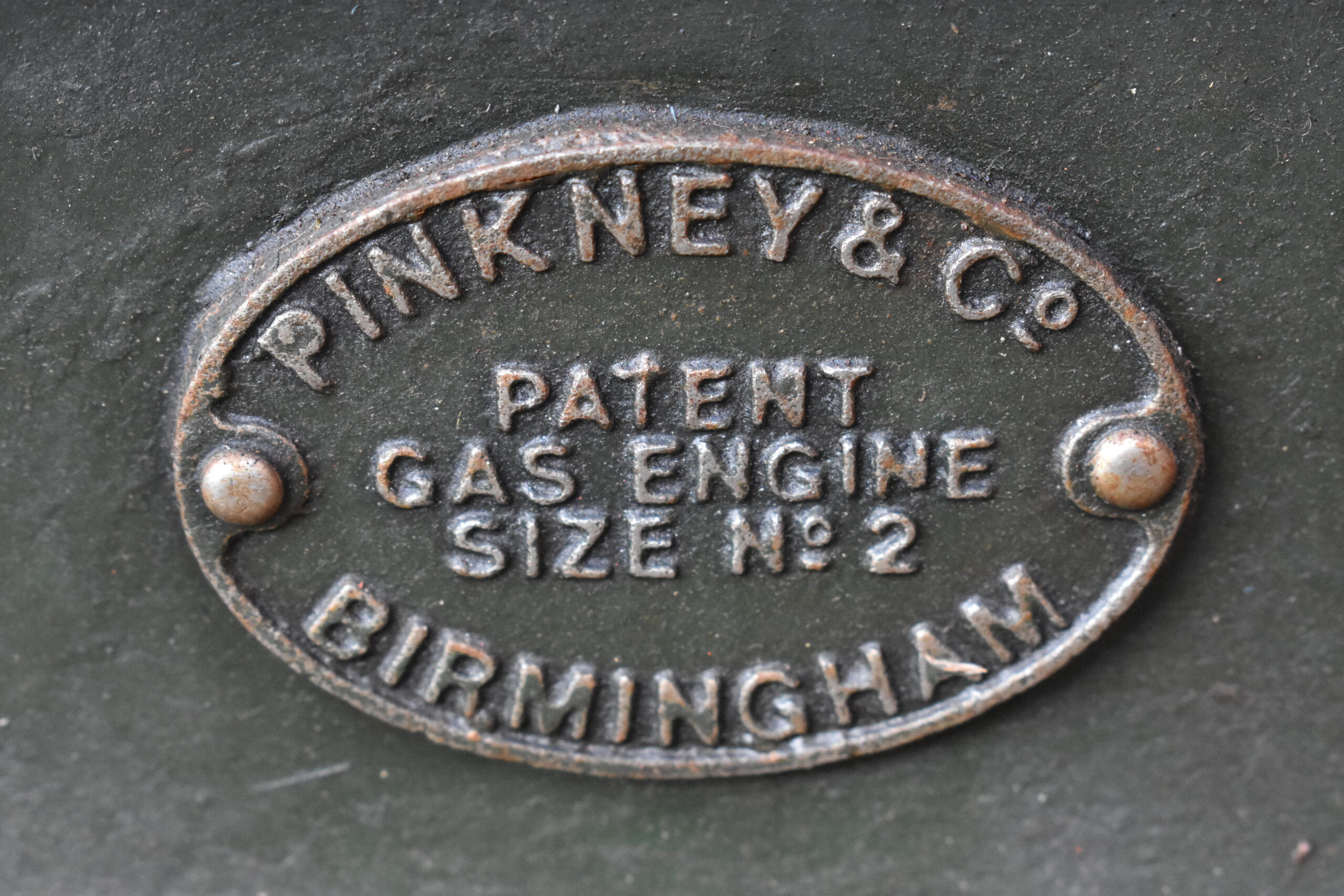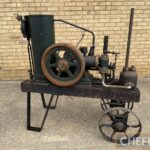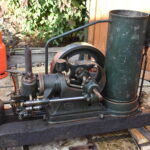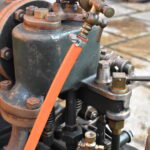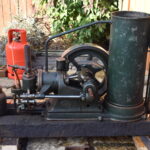A couple of weeks ago we purchased a circa 1903, Pinkney No2 gas engine from the Cheffins sale at Sutton near Ely. After getting the engine home last weekend, we unloaded the engine from the trailer and removed the single axle and support legs from the other end. Whilst the axle & bracketry helped to lift the engine up to a sensible height for starting, it didn’t actually make the unit very mobile as there was no easy way of lifting the non-wheeled end of the trolley. Due to the height of the axle & bracketry, it also meant that I couldn’t even get under the unit & pick it up with the pallet truck to move it around the yard.
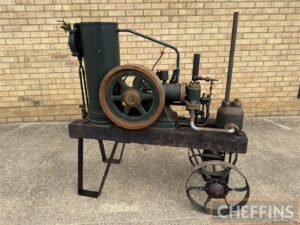
The Pinkney as pictured at the Cheffins sale. The trolley/ironwork lifted the engine, making it very difficult to move about.
Once the iron work was removed the weather turned, so the Pinkney was quickly put away in the engine shed. This weekend saw Sunday turn out nice and dry with plenty of sunshine, so we decided to have a bit of a play with the Pinkney. The engine has previous been mechanically restored to a very high standard, but its apparent that it had not run for many years. When purchased from the sale there was no gas regulator or demand valve included but there was a gas bag fitted to the engine, which unusually fed not only the engine inlet, but also the burner for the hot tube ignition. After rigging up one of our own regulators we were able to get the burner lit, but as this was fed by the gas bag the flame was pulsing and required a lot of pressure going into the bag to remain lit. Once the tube was warm enough an attempt was made to start the engine, but due to the before mentioned pressure, it soon became obvious that we were just flooding the engine with gas.

The engine with the trolley work removed. Moving it is now much easier as I can get under it with the pallet truck.
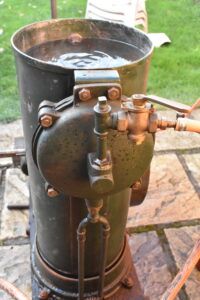
The gas bag. Note the split at the outlet, with 1 pipe going to the burner and the other to the engine inlet/mixer.
Plan B was then adopted, whereby the feed from the gas bag to the burner was capped off and a separate feed from another gas bottle was fitted to the burner. This allowed for control over the amount of gas going to the engine and also of the gas going to the burner. Once all of the pipework was rigged up, the lamp was lit and after only a couple of minutes the hot tube was glowing a nice cherry red. The engine was spun over, and it fired but didn’t instantly pick up. After a bit of adjustment to the gas mixture the engine soon fired up and was hitting & missing nicely. Once running the burner for the hot tube was turned down a bit and the engine settled into a nice steady beat. It ran for about 90 minutes with the cooling tank getting warm, but certainly not too hot.

The orange gas hose shows the temporary pipework for the burner, with the brass tap at the bottom acting as a cap for the pipe that comes from the gas bag.
Now that we have had the engine running and are happy with its performance, a more permanent change will be made with period pipe work. A new set of wheels & axles will also be put together to make the engine more mobile and easier to take out to shows.
You must be logged in to like this post.

